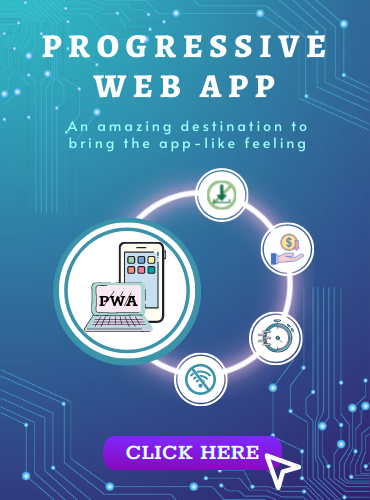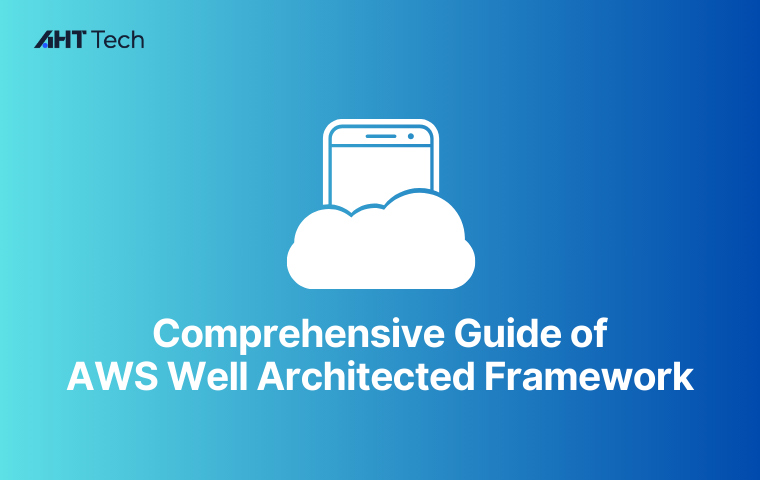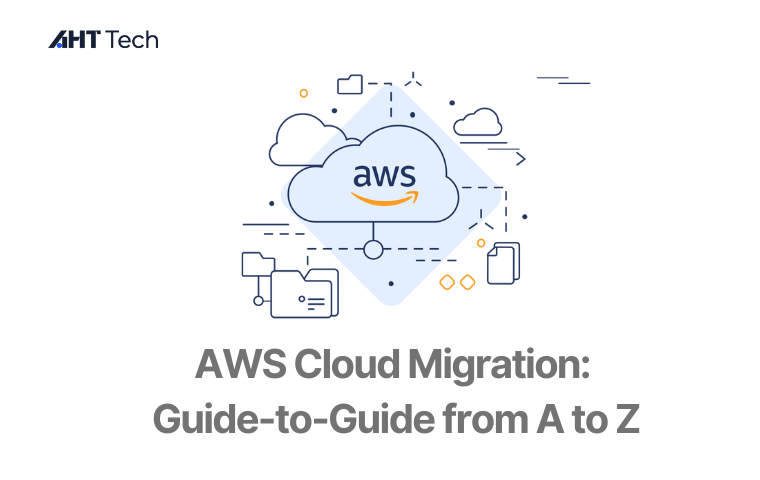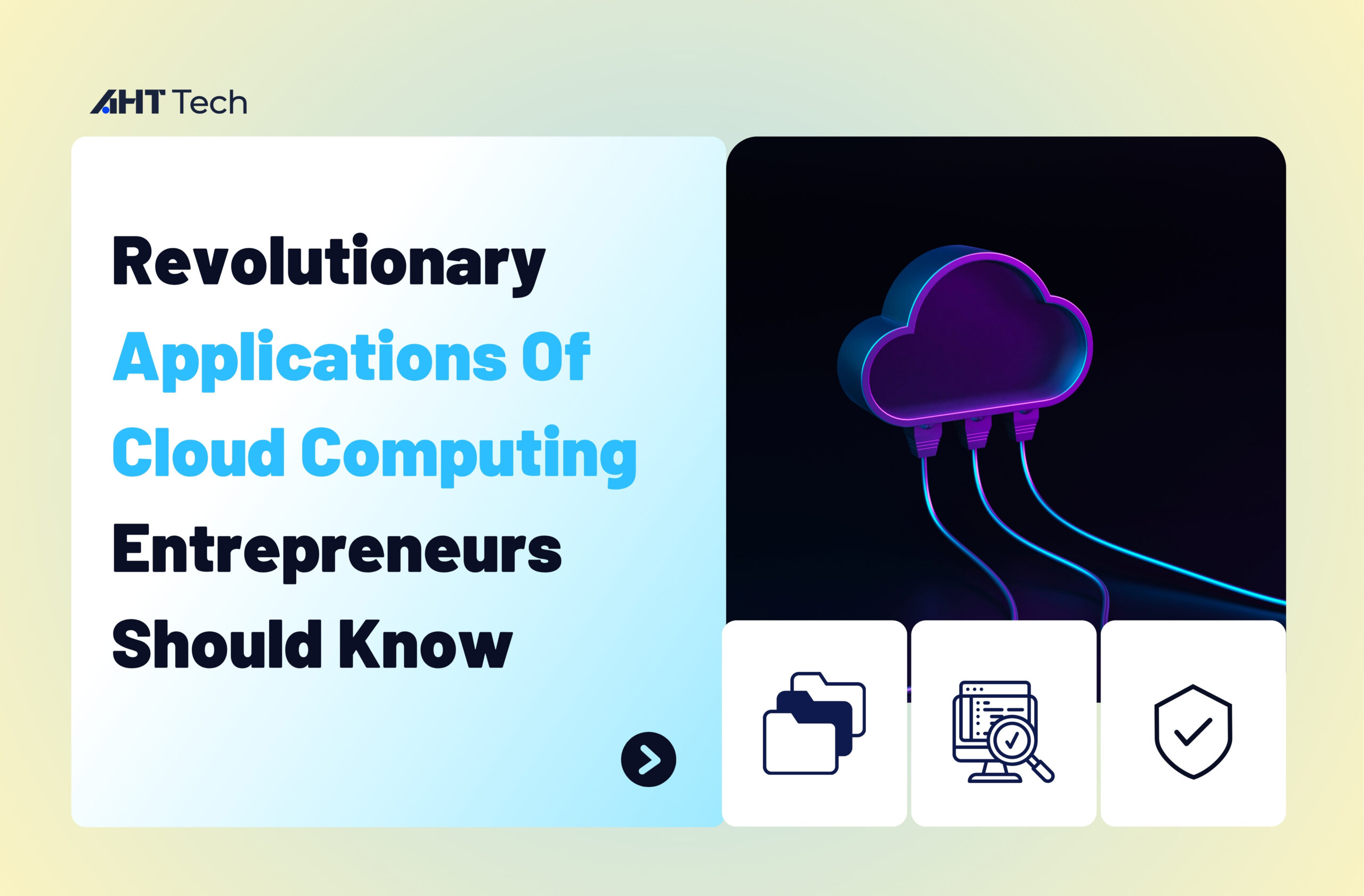In this post, we look at 10 eCommerce-related Python libraries, platforms, tools, and frameworks. We choose these libraries depending on the level of relevance to e-commerce, popularity, the level of maintenance offered to the code base, and usefulness. The first three, Saleor, Oscar, and Shuup, were exclusively for eCommerce. They include the basic features of an e-commerce website, such as a shopping cart, checkout procedure, and user administration. Each of these, however, has many more advanced functions.
Next, we chose two API libraries after these three. Shopify and WooCommerce both provide Python APIs. Because these two platforms are the most popular eCommerce platforms on the web, they are quite valuable for a Python developer working in the eCommerce industry. These libraries can be used with other Python libraries for data analytics.
The remaining libraries include various functionalities that are useful for e-commerce websites. This list is not in any specific order because each of these libraries can be useful based on the project’s needs.
What is Python?

Python has become one of the most popular programming languages in the world in recent years. It’s useful in everything from machine learning to building websites and software testing. Both developers and non-developers can use it.
Python is a programming language aimed at building websites and software and automating processes, as well as conducting data analysis. It is a general-purpose programming language, which allows developers to create applications. Python has become one of the most commonly used programming languages owing to its versatility and beginner friendliness. In 2021, it was the 2nd most popular programming language among engineers, according to a survey performed by industry analyst firm RedMonk.
Now, let’s turn to top best Python libraries for eCommerce development in 2022.
Top 10 Python libraries for eCommerce in 2022
Oscar – E-Commerce Framework
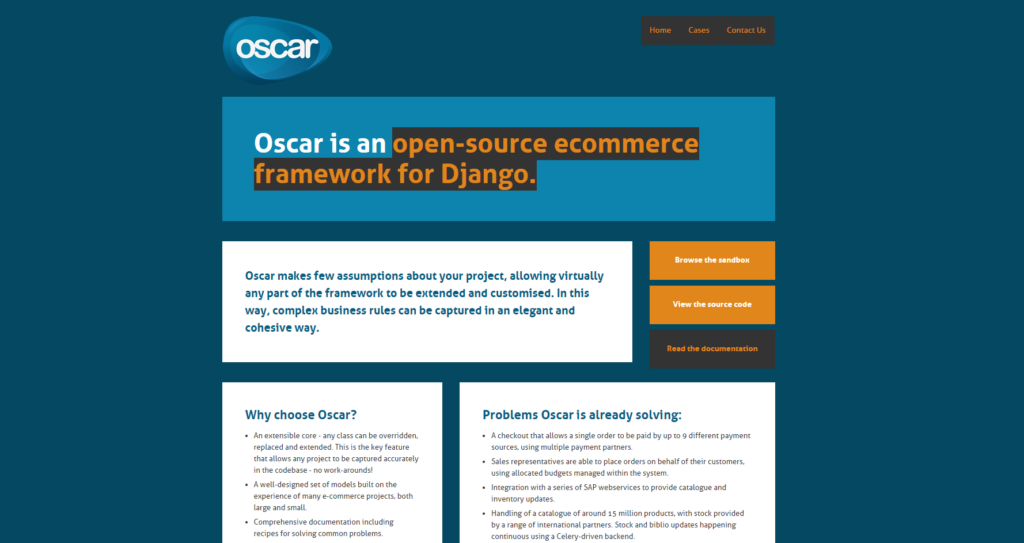
It comes with many amazing features: a shopping cart, analytics, a dashboard, offers, wish lists, and search right. Oscar appears to be a viable B2B e-commerce solution. Sales reps can use Oscar to place orders on behalf of their clients. Customers can pay with a variety of methods for a single order. Oscar also works with ERP systems. For the same product, merchants might have many fulfillment partners.
Oscar places a strong emphasis on customizability and extensibility. They achieve this customizability by employing a design architecture based on abstract models that include fields that are relevant to any e-commerce domain. The aim is that each domain will implement these fundamental models and then construct domain-specific models based on their requirements. A dynamic class loading system is also included in the design, which prioritizes and loads any custom classes developed for a project during runtime, rather than using Oscar’s default classes.
On their website, Oscar includes a lot of documentation and sample projects to help you start, as well as recipes with answers to common issues. They also provide a live sample site that has been set up with all of the default setups so that you can explore the system’s features.
Saleor – E-Commerce platform

Saleor is a headless, GraphQL-first e-commerce platform that offers lightning-fast, dynamic, and personalized purchasing experiences. Instead of supplying web pages, Saleor distributes content as data via an API. As a result, this program works well with a wide range of frontend technologies.
It’s a full-featured e-commerce platform that takes care of a lot of the challenges that a developer would face if they were starting from scratch. Customer management, orders, items, shipping, and site administration are just a few examples.
Saleor’s architecture involves three basic elements:
- The first is the Saleor core, which serves as the system’s backend. Engineers use Python and the Django framework to create the core. It uses the GraphQL API to communicate with the other components.
- The dashboard, which is a frontend React application, is the second component.
- The Storefront is Saleor’s third component. They provide a React-based storefront as an example. However, utilizing the Saleor SDK, developers can design custom shops using alternative technologies.
Developers can enhance Saleor’s functionality using one of two approaches. They could construct external apps that interface with Saleor’s API using an app-based approach. Alternatively, they might create a plugin on the Saleor server. Function callbacks are used by plugins to extend the functionality of Saleor. However, Saleor’s cloud service does not support plugins.
Saleor provides a developer guide. There are instructions for installing and deploying Saleor in a variety of cloud providers there. You may also use Docker to deploy to your server.
Shuup – Marketplace Software

Shuup is a “real multi-vendor marketplace program that works right out of the box.” Shuup, as its name suggests, is to create marketplace websites similar to eBay or Amazon. It is open source, much like the other things on this list. Its product offering is versatile, with the option to include tangible things, digital downloads, and even services. Shuup is also a headless system, which means that developers can use it with any front-end technology to create a marketplace. You may also utilize any Content Management System with Shuup (CMS).
Shuup provides artificial intelligence (AI) tools for personalizing client experiences. Advanced search results, automated chatbots, recommendation engines that offer material that users are likely to be interested in, and the display of personalized adverts and promotions are all examples of these capabilities. Their AI services also cover the automation of e-commerce enterprises’ daily activities. Automating monotonous operations, marketing automation, and customer service automation are all examples of this. Shuup’s open-source version, however, does not provide these specialized services.
Shuup sells a business license for their product, however developers can use their open-source software for free.
WooCommerce Python API – API Library
Python developers can use the WooCommerce Python API to access data in WooCommerce stores. WooCommerce is a WordPress plugin that allows you to add ecommerce functionality to your website. WooCommerce, along with Shopify, is one of the most popular e-commerce platforms available today. The Shopify Python API and the WooCommerce Python API are comparable in principle. You can construct Python apps that interface with clients’ WooCommerce stores if they already have one. Machine learning, neural networks, and other data science tools can all be used with Python to provide value.
The WooCommerce API, unlike the Shopify API, only supports REST. API keys must be generated in the WooCommerce settings for authentication. A WordPress user will be associated with the key that is created. The API will store the user’s access levels.
Coupons, customers, orders, refunds, goods, product variations, product characteristics, settings, payment gateways, and many other aspects of the shop may all be accessible when using the WooCommerce API. Requests are returned in JSON format via the WooCommerce API.
Shopify Python API – API Library
The Shopify Python API is a library that allows Python programmers to access data in Shopify’s admin area. Shopify is one of the most common eCommerce platforms today. The Shopify Python API could help you unleash the potential of Python for your clients who already have a Shopify business.
To use this library to interface with a store’s admin page, you must first establish a Shopify application. The app can be either a private app for a single store. Or it could be a public app created by a Shopify partner that can be utilized by multiple stores. Tokens are generated by public apps using OAuth, whereas private apps utilize conventional HTTP authentication.
The Shopify Python API support both GraphQL and REST. It gives you the ability to create, read, edit, and delete data in Shopify Stores. Customers, discounts, events, items, inventory, shipping, fulfillment, orders, Shopify payments, billing, marketing events, and many other features of the shop can be accessed using the API. A rate limit of 40 queries per app per store per minute applies to the REST Admin API. At 2 requests per second, the request allocation recovers.
Waffle – Feature Flipper
Waffle is a Django-based feature flipper. A feature flipper allows you to alter the features your app loads based on a set of flags. The Django admin page can be used to set these flags. Flickr, for example, uses feature flipping to maintain a single branch of their code at any given moment. They use a single branch on all of their servers, but depending on the environment, they turn features on and off. This allows them to experiment with new features without harming the live site. However, how can a feature flipper help with e-commerce? It can be included in an A/B testing toolset.
Waffle has options for doing small-scale tests with single users or known groups. Adding a user’s account to the flag’s list of users makes controlling a flag for that user straightforward. The flag might let you decide which version of the page viewers will see. To do large-scale tests with a subset of production users, you’d have to write specialized code. They recommend measuring the impact of modifying flags on client-side metrics using page or session variables similar to those used by Google Analytics. They provide how to do server-side A/B tests for performance testing in their documentation.
Pandas – Data Analysis library

What if you can’t achieve a project need using the technologies listed above? For example, you might wish to generate a bespoke report with data from multiple platforms and perform a mathematical analysis. A tool like Pandas could be useful in this situation. Pandas (Python Data Analysis Library) is a library for performing mathematical analysis in Python.
Pandas are commonly used for “data wrangling.” This is the process of cleaning data and/or converting it to a different format so that it can be used for a different purpose later. This can be a very useful tool given the numerous platforms and tools utilized in an e-commerce operation. Developers can use Pandas to combine data from several sources into a readable format. Pandas are useful for machine learning because of their data manipulation capabilities.
When paired with the Matplotlib library, Pandas may be used to visualize data. Visualization is another important aspect of eCommerce. In any firm, data visualization is critical for decision-making.
In the example below, we read a CSV file containing information about the libraries we investigated for this article. Then we make a bar chart with some of the data:
This is the complete code for plotting the data:
import pandas as pd |
The code is explained in detail in the following sections. We start with installing pandas and matplotlib:
import pandas as pd |
This function reads data from a CSV file and places it in a data frame like follows:
df = pd.read_csv('Data.csv') |
This determines the type of graph, as well as its size and color:
df.plot(kind='bar', figsize=(15, 8), color=['blue']) |
The values for the labels of the bars in the chart (platform or library names) are as below:
plt.xticks(range(10), df.loc[:,"Platform or Library"], rotation=20, horizontalalignment="center") |
The axes’ labels:
plt.xlabel('Library') |
Then is the title of the figure:
plt.title('Stars on GitHub for Top E-commerce Libraries') |
This feature shows the figure:
plt.show() |
Django Google Optimize – A/B Testing
Django Google Optimize is a Django application for integrating Google Optimize with Django-based websites. Google Optimize is a server-side A/B testing tool from Google that makes creating server-side A/B tests simple. This type of test allows website administrators to present different bits of information to different audiences while tracking the results. The most effective piece of material can be chosen based on the test results. This is highly helpful for e-commerce websites because it might result in a direct rise in sales.
Google Optimize is free, and it includes a visual editor for creating the various user experiences. It has a low entry barrier. It could also be a useful tool for small organizations that currently use Google Analytics for analytics. It does, however, have some limits as a free option. With this tool, you can only conduct 5 tests at a time. Another drawback is that the tool lacks a segmentation option. It does not allow you to segment your clients and assign tailored experiences to them.
Given these drawbacks, in 2022, Google Optimize appears to be one of the best Python libraries for smaller businesses who currently use Google Analytics and don’t have the time to master more complicated products with a steeper learning curve.
NumPy – Scientific Computing Library
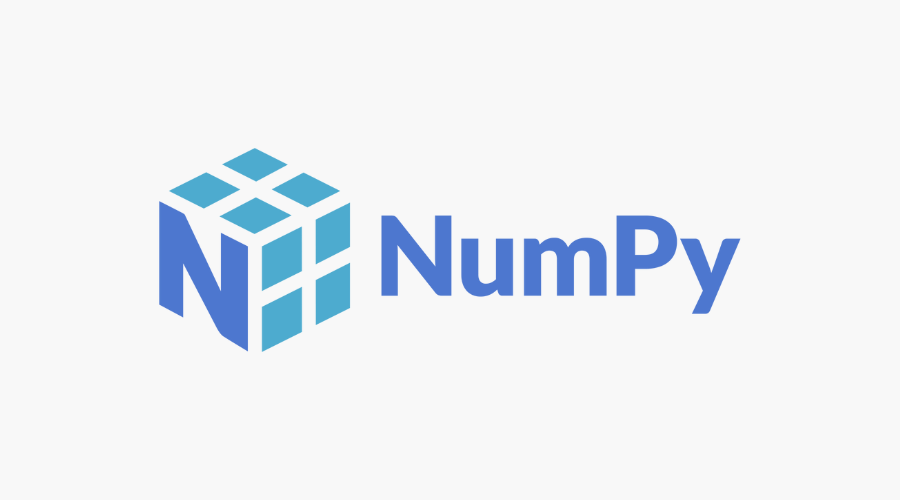
The majority of Python-based mathematical analytical tools and libraries, as well as Pandas use NumPy. This library can help with any quantitative analysis for an eCommerce business.
NumPy’s streamlined performance is one of the reasons for its popularity. NumPy was created using Python code that was vectorized. Utilizing the Python language, they avoided using loops. Instead, they used C, a precompiled language, to create loops. NumPy is extremely fast because it uses precompiled code for complex calculations.
The multi-dimensional array: array object is an important notion in NumPy. The size of a NumPy array is specified at the time of creation, and it must include objects of the same data type. When a NumPy array’s size is modified, the original array is erased and a new one with the new size is generated. On these arrays of data, NumPy can do simple statistical calculations like mean, median, variance, and standard deviation. NumPy also includes all of the standard mathematical operations. NumPy’s ability to do linear algebra operations is a significant feature.
analytics-python (Twilio Segment) – Analytics Library
analytics-python is a Python library for recording analytics from code. Twilio Segment service, which is a Customer Data Platform, is accessible through this library. The library is compatible with the Django Framework, and the documentation includes instructions on how to set it up with Django.
Identify, Track, Page, Screen, Group, and Alias are the six basic function calls to save user data in the library:
- Identify assigns each user a unique ID and allows you to add traits to a dictionary about them.
- Track allows you to keep track of whatever actions a user does on your page, such as adding an item to their shopping cart.
- Page keeps track of page visits as well as other statistics. If you utilize the Segment client-side library, this is automatically tracked.
- In mobile apps, Screen collects screen views as well as optional information about the user’s screen, such as the brightness level.
- A user is assigned to a group, which can be an organization, a firm, or another sort of entity.
- Aliases allow you to connect multiple identities. Certain platforms may find this handy in tying an anonymous user to their new account when they join up.
A free version of Segment allows you to track up to 1,000 visits per month from two sources (for example, a website and a mobile app) and includes 300+ integrations. Paid tiers start at $120 a month and include more visitors, sources, and integrations, as well as additional features.
Conclusion
Finally, we have finished introducing the most popular and effective Python libraries for eCommerce in 2022. There are still more than 200 Python libraries out there available for eCommece platforms development. However, not all of them are suitable for your business. You have to consider carefully before choosing the ones that make the most sense to you and your firms. If you still don’t know what Python library is for your business or you don’t know how to make the most out of it, you can come to us. AHT Tech is always willing to help you build a more functional mobile app with our Mobile Apps Development. CONTACT US right now for free quotation!






